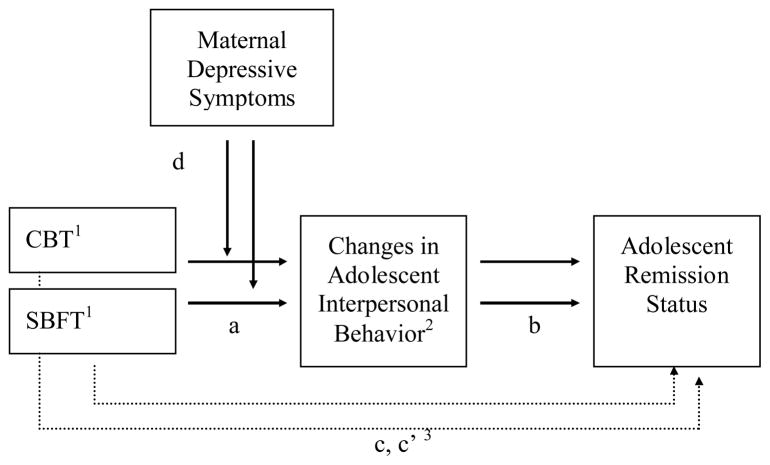Figure 1.
An illustration of planned analyses for hypotheses testing. 1 Each structured psychotherapy is represented by a dummy-coded variables: a) CBT or (b) SBFT, compared to those adolescent who received NST. 2 Three observed indices of adolescents’ interpersonal behavior were assessed during interactions with mothers before and after treatment: adolescent involvement, adolescent problem solving, and dyadic conflict. Changes in adolescents’ interpersonal behavior were estimated by controlling for pre-treatment behavior in regression models. 3 Path c represents the association between each structured psychotherapy and adolescent remission status at post treatment; Path c′ represents the indirect effects of each structured psychotherapy on adolescent remission status through changes in each adolescent interpersonal behavior (involvement, problem solving, dyadic conflict).

